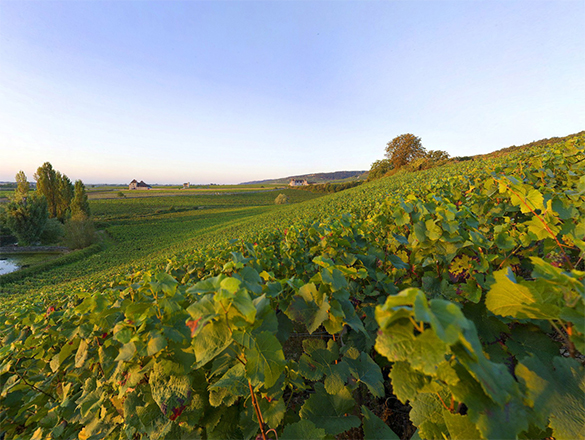

The vineyards of Bourgogne produce some great wines with a historical and international reputation. However, the region is not simply limited to its iconic appellations. In addition to its Village Premier Cru and Grand Cru AOCs, it also produces a range of wonderful Régionale and Village appellations to explore.
You will also find a full list of the Bourgogne’s Climats and lieux-dits on this page.
Check out the complete list of the 84 Bourgogne appellations.
However, your exploration has only just begun. Bourgogne wines have never before offered such high quality. Besides our range of internationally celebrated wines, try some of our lesser-known appellations where there are lots of surprises in store.
And for a fun way to find out more about the wines on offer, try out our “Which Bourgogne wine is right for me?” quiz, or check out Bourgogne Maps to take an interactive tour of the region.
Village appellation
VIGNOBLE DE LA CÔTE DE NUITS
11 septembre 1936
Reds only - Pinot Noir.
Area under production*:
1 hectare (ha) = 10,000 m² = 24 ouvrées.
152.64 ha (including 56.33 ha Premier Cru).
Average annual yield**:
1 hectolitre (hl) = 100 litres = 133 bottles.
5,760 hl (including 2,252 hl Premier Cru).
*In 2022 **5-year average, 2017-2021
Appellation Village of the Côte de Nuits region (Côte-d’Or).
This appellation includes 24 Premiers Crus Climats.
Producing commune: Chambolle-Musigny.
The commune of Chambolle-Musigny also produces two Grands Crus:
MUSIGNY (see Appellation sheets No. 53), and BONNES-MARES (see Appellation sheets No. 5).The appellations CHAMBOLLE-MUSIGNY and CHAMBOLLE-MUSIGNY PREMIER CRU may be followed by the name of their Climat of origin.

Chambolle-Musigny is a red wine, often regarded as the most “feminine” wine of the Côte de Nuits; its intensity and delicacy express themselves with elegance and subtlety. To the eye, it presents a bright ruby hue with luminous highlights. It may darken a little over time but with no loss of impact. Its bouquet, easily recognisable, is composed of violet and small red fruits (raspberry, strawberry). With further aging it tends towards spiced ripe fruits and prune, or towards truffle, underbrush and animal notes. Rich, fragrant and complex, it lines the palate with silk and lace. Its delicate but fleshy texture in no way detracts from its solid and durable structure. On the sweet side with little trace of acidity, its tannins remain silky-smooth.

With a personality that allies power and feminity, it demands high-flavoured and sophisticated dishes like feathered game (in sauce, for example), well-roasted lamb or a free range capon. Roast veal’s subtle texture would be delicately enveloped by the dense but silky tannins of the Chambolle (especially the Premiers Crus). Cheeses - preferably mild: Brillat-Savarin, Reblochon, Cîteaux, Vacherin, Brie de Meaux or Chaource. Soft-centred cheeses will respond to its great aromatic complexity.
Serving temperatures: 12 to 14°C for young wines,14 to 16°C for older wines.

This little village of the Côte de Nuits, formerly an adjunct of the Abbey of Cîteaux, is unwilling to expand, since to do so would mean encroaching on its precious land (though it has given space to a lime-tree with a girth of 5 metres!).
Two superb appellations Grands Crus are grown here: BONNES-MARES, which links its vineyards to those of Morey-Saint-Denis, and MUSIGNY which overlooks the Clos de Vougeot.
The village also boasts among its fine wines a prestigious Premier Cru, Les Amoureuses. Its AOC dates from September 1936, making it one of the first French vineyards to be thus designated.

The slope faces east at altitudes of 250-300 metres with only a shallow covering of soil overlying the parent rock, but fissures in the hard Jurassic limestone allow the roots to seek nourishment deep within the sub-soil. Boulders and gravels in the valley bottom ensure good drainage.
